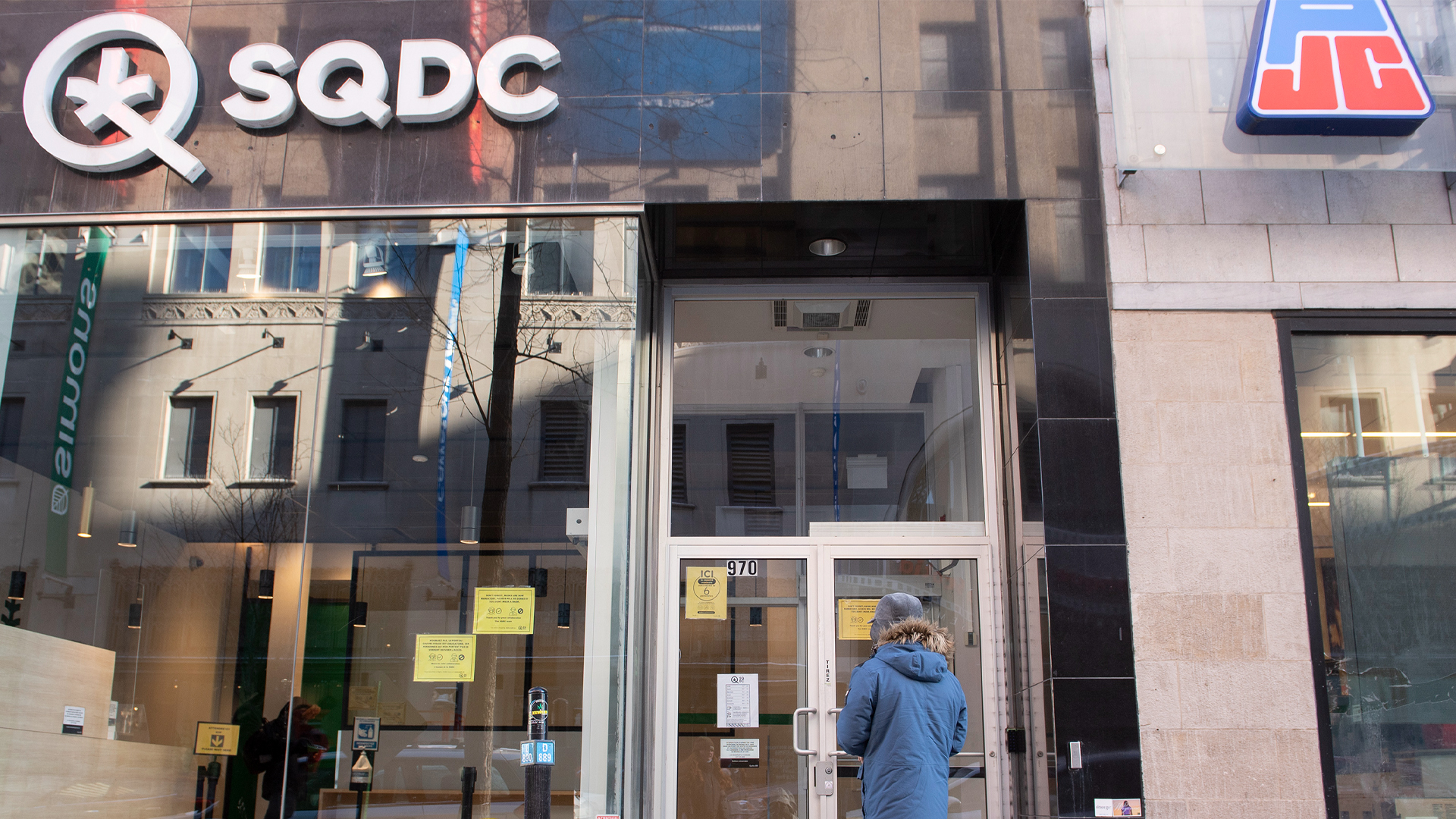
(Version française disponible ici)
Since the Canadian government legalized cannabis in 2018, Quebec has set itself apart in the provincial and regulatory landscape by adopting a public health-oriented approach. Quebec arranges the distribution and sale of cannabis through a state-owned monopoly that is required to contribute the majority of its profits to a cannabis prevention and research fund.
The SQDC has nearly 100 retail outlets and is still expanding. Same-day delivery is available, and in a growing number of Quebec regions, 90-minute delivery is on offer. The minimum legal age to buy and consume is 21, compared with 19 in most of the country and 18 in Alberta. Edibles cannot be candy, desserts or chocolate.
To the extent possible, the province has avoided a commercial logic, which has not necessarily been detrimental to the experience of consumers. Quality-assurance mechanisms and procedures have been established, and consumers have access to quality products and an efficient distribution network.
Five years on, what lessons can we draw from this approach to cannabis regulation?
Quebec has a cannabis oversight committee responsible for evaluating the implementation of the province’s Cannabis Regulation Act and monitoring emerging cannabis-related trends. Its work allows us to make a number of observations and draw several conclusions about the efficacy of Quebec’s approach – and thus to make recommendations that are equally relevant at the national level.
To start, we must acknowledge that our understanding of the cannabis market, both in Quebec and in Canada, is still incomplete. The legal market has undeniably grown in importance. The SQDC estimates it has gained 56 per cent of Quebec’s illegal cannabis market. However, these are rough estimates and the true size of the illegal market is still largely a question mark. As a result, it is still difficult to accurately measure the impact of cannabis legalization, particularly with regard to one of Ottawa’s main objectives, to “keep profits out of the pockets of criminals.”
Cannabis-related products have proliferated in every province since legalization, including new categories such as edibles, beverages, oral patches and pre-rolled joints. It’s the market logic of profitability: more supply can produce more sales. Indeed, a more diversified legal offering might compete more effectively with the illicit market and meet the legislative objective of reducing the share of the illegal market.
However, the mechanisms by which consumers transfer from the illegal to the legal market remain poorly understood. This is partly due to the difficulty of obtaining reliable data on the behaviour of consumers who choose to continue sourcing from the illegal market.

Ultimately, this lack of knowledge means that we cannot effectively assess the impact of changes in supply on the size of the illegal market. Nor does it allow us to assess the impact of this supply on the conversion of new consumers.
Offering more products to attract consumers to the legal market might also stimulate a rise in consumption and in the number of new consumers, the cannabis oversight committee notes in its 2022 report. In Quebec, the SQDC’s stated goal is to educate users on how to consume products safely while reducing the illegal trade through the sale of quality, lower-risk products.
We must also be concerned about the impact, particularly on young people, of cannabis marketing and advertising. Years of experience regulating tobacco and alcohol in Canada have shown a correlation between the exposure to young people of alcohol advertising and their consumption of it. Federal and provincial regulations restrict the cannabis industry’s ability to promote its products, but social media offers a powerful and hard-to-control workaround.
X, formerly Twitter, for example, has become a powerful advertising tool for cannabis producers since earlier this year, when Elon Musk began to allow cannabis ads to run in countries and regions where cannabis is legal.
The use of aggressive marketing techniques by cannabis companies, in which cannabis products are presented as a lifestyle and a sophisticated consumer experience, is far from trivial, and directly contravenes one of the objectives of the federal law, which is to protect young people from cannabis consumption.
The legal age in Quebec for purchasing and consuming cannabis is the highest in Canada. However, recent data show that the proportion of those who vaped cannabis has grown from 44% in 2021 to 70% in 2022 among users aged 15 to 17, meaning that more than two out of three users in this age group, among which 19% are cannabis users, vaped cannabis, despite not being sold legally in Québec. This type of consumption carries a risk of dependence and is facilitated by uncontrolled commercial distribution over the Internet.
The legalization of cannabis for recreational purposes has been accompanied by an increase in its use for self-medication. The 2022 Quebec Cannabis Survey found just over a quarter (28.1 per cent) of respondents had used cannabis for medical purposes or to relieve symptoms in the previous 12 months. Canadians in general have reported using cannabis to calm their anxiety and depression, reduce insomnia, alleviate chronic pain, and more.
A still-hazy picture of cannabis after five years of legalization
The findings from the 2021 Quebec Cannabis Survey suggests that only a relatively small proportion of users of cannabis for medical purposes might have prescriptions from a doctor. This suggests that a large number of cannabis users for medical reasons are not under the supervision of a health-care professional, which creates risks of misusing or counter-productively using cannabis for physical or psychological health reasons.
We recommend three steps that can be taken at the national level to regulate cannabis more efficiently and effectively.
1. Conduct more national studies: We must conduct pan-Canadian studies supported by regulatory and public-health authorities to develop a better understanding of the market share captured by the legal market, and the mechanisms by which consumers migrate from the illegal to the legal market.
2. Leverage monitoring tools: Regulatory and public-health authorities should develop tools to monitor marketing on social media by cannabis companies.
3. Supervision by health-care professionals: Cannabis users should be encouraged to treat their symptoms only on the advice of a health-care professional.
These problems should not obscure the progress made with the legalization of cannabis, which has made it possible to destigmatize the use of this drug and break the deadlock of a repressive approach that has led to drug trafficking, over-incarceration and its resulting socioeconomic consequences on vulnerable communities.
However, achieving the objectives set out in the federal law is far from guaranteed in the current regulatory context, and requires more concerted action by public health organizations in Canada.











